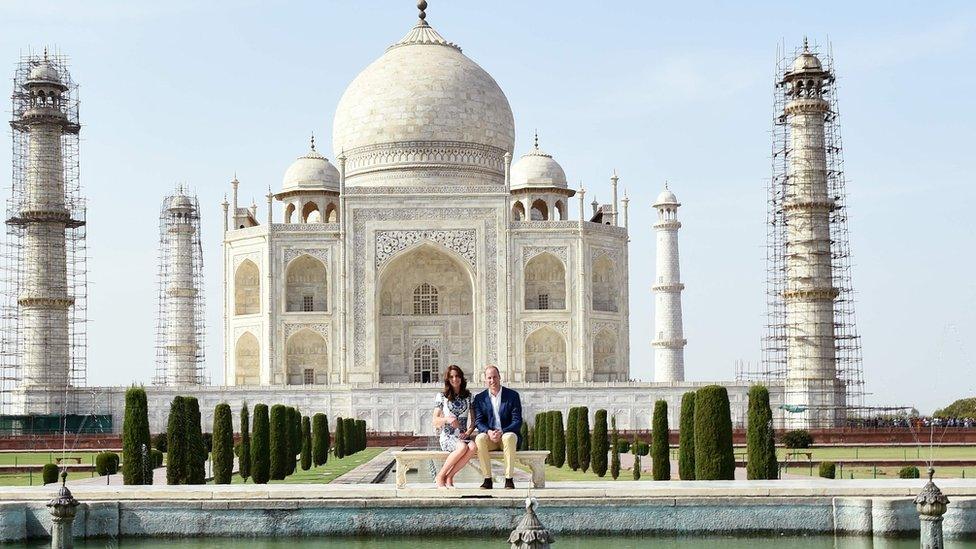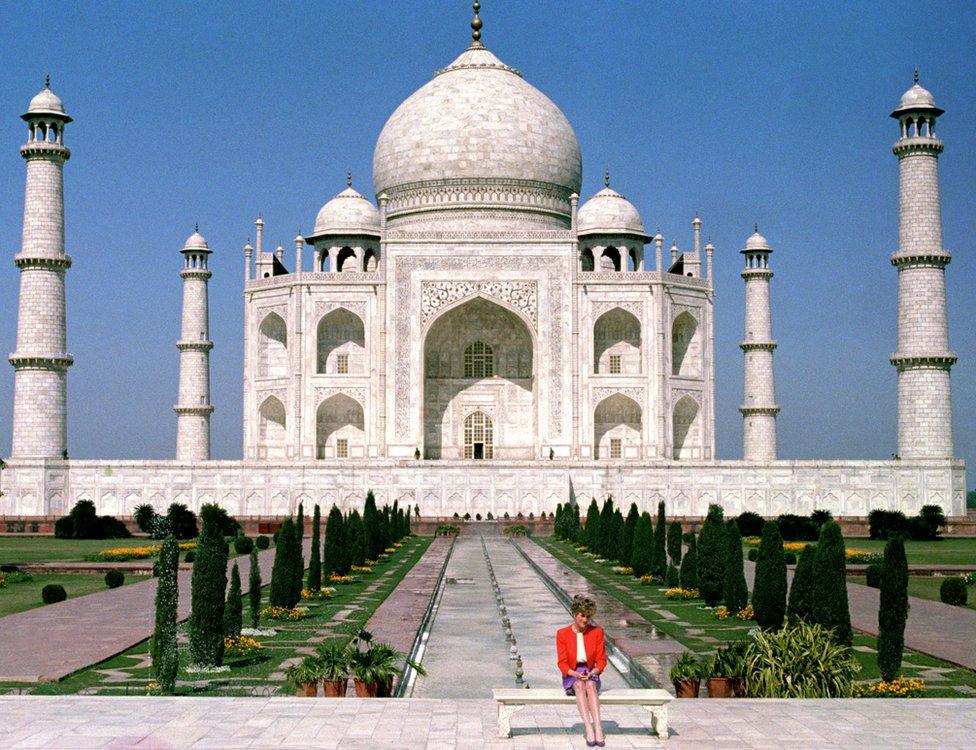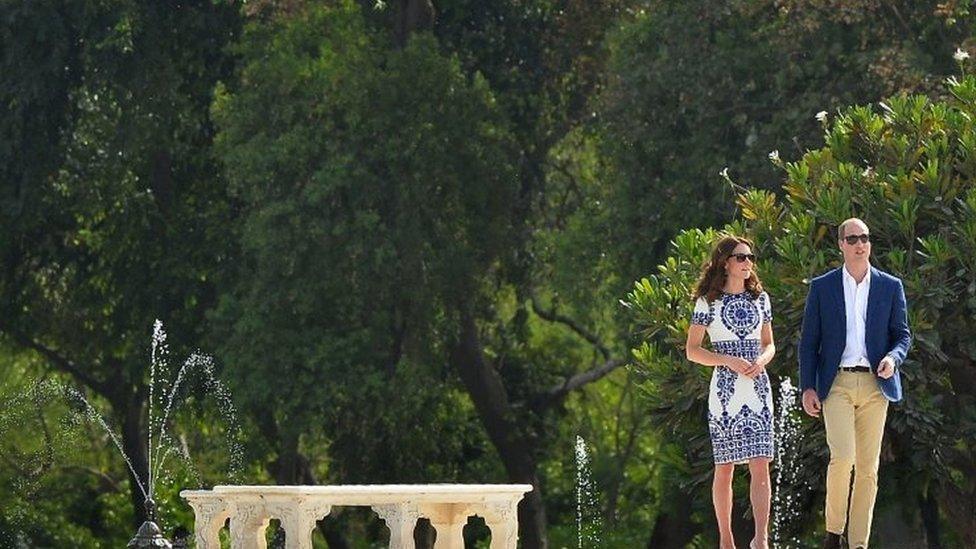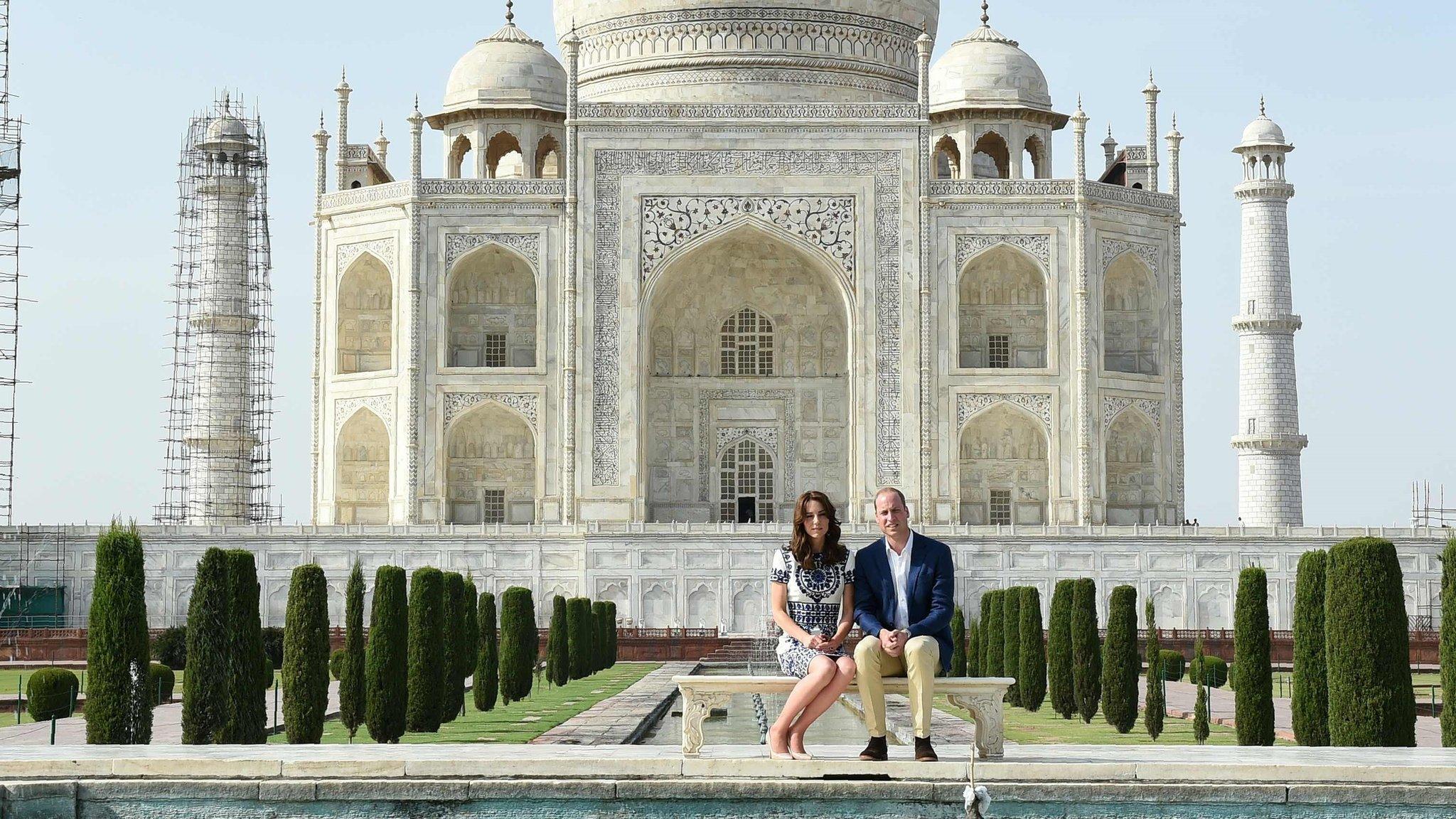Taj Mahal pictures of duke and duchess create 'new royal narrative'
- Published

It was a day when a new royal narrative was written at India's Taj Mahal.
The Diana photographs captured isolation; a princess soon to loosen her ties to the monarchy.
Today, her son, a prince, brought his wife to the Indian monument to love - something his father promised and failed to do with his first wife.
Here was a duke and a duchess who appeared comfortable together and in their own skins.
Tourists at the World Heritage Site are told by their guides about the "Diana bench". It's a talk that will have to be updated. Fresh memories have been created.
Today's photographs secured a place in history the very moment the camera shutters started clicking.
This new chapter in the Windsor chronicles has come at the end of a week when the Cambridges have been on display, seeking coverage, not requesting privacy.

Diana, Princess of Wales, pictured sitting alone in front of the Taj Mahal in February 1992
They've been captured feeding abandoned baby elephants and rhinos; playing cricket with disadvantaged children while wearing wedges (the duchess not the duke); and trekking up a mountain to a Bhutanese monastery where, according to legend, a monk flew on the back of a tigress in the 8th Century.
And the residents of a palace went to the slums of Mumbai and Delhi. Briefly.
Even in such overcrowded dwellings attempts were made to make them more palatable for such visitors. The Indian equivalent of the smell of fresh paint that tends to follow the Queen on her travels around the world.
This part of their programme had an understandable impact on a future king and queen - as it would on anyone of considerable affluence coming across extreme poverty.

The royal couple visited India's Taj Mahal on the final day of their seven-day tour
To critics who might argue such encounters are primarily about burnishing their "caring" credentials, the royals have an answer. The proceeds from a Bollywood gala will go towards several charities working with India's slum and street children.
So why were Wil-kat - as an Indian newspaper has christened them - in India and Bhutan?
Those who oppose the institution they represent, and who seek an elected head of state, are always dismissive of such tours.
They argue they're more about the participants having a good time rather than bringing any tangible benefit to the country.
'Unbeatable combination'
The trek to the Tiger's Nest Monastery in Bhutan would be part of the case for the prosecution.
In their defence, advisers and supporters say this was a couple representing the UK abroad and strengthening the links with the countries they touched down in.
The Indian Prime Minister Narendra Modi has described the Anglo-Indian relationship as an "unbeatable combination".
A UK official spoke, during a party for the Queen's 90th birthday, of how Britain was "hungry to do more with India".
The case for the defence is that William and Kate will have helped highlight that hunger and possibly triggered future deals that will feed it.
This was a week in which Prince William was a royal, morning, noon and night.
Not every week is like this and that's what has irked some newspapers that have documented every aspect of his development.
Their argument is that "Work-Shy Wills", as they've called him, needs to focus on what he was born to do.
His argument, were William Wales to write a column in one of their publications, is that he's a senior royal who balances a job as an air ambulance pilot with his desire to be there for his children.
William, who saw what joining the institution did to his mother, has always tiptoed towards his destiny.
As early as next year, when he has to decide whether or not to continue as a pilot, Prince William may discover that the time for tiptoeing is over.
- Published16 April 2016
